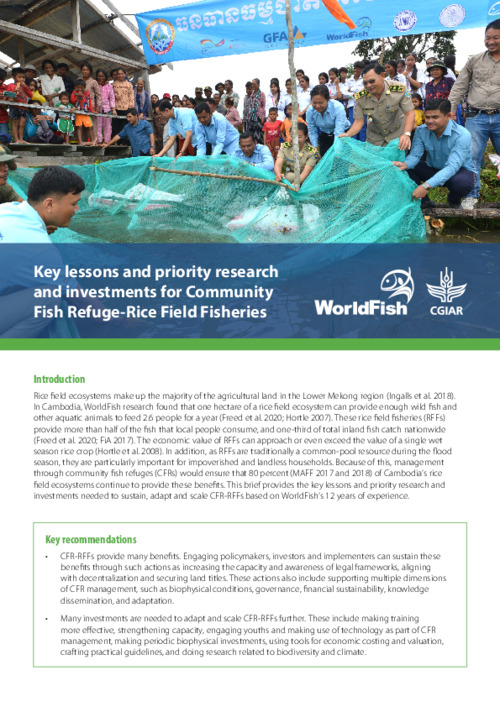Key lessons and priority research and investments for Community Fish Refuge-Rice Field Fisheries

Freed S, Ou P, Sean V and Sun V. 2024. Key lessons and priority research and investments for Community Fish Refuge-Rice Field Fisheries. Penang, Malaysia: WorldFish. Policy Brief: 2024-11.
Rice field ecosystems make up the majority of the agricultural land in the Lower Mekong region (Ingalls et al. 2018). In Cambodia, WorldFish research found that one hectare of a rice field ecosystem can provide enough wild fish and other aquatic animals to feed 2.6 people for a year (Freed et al. 2020; Hortle 2007). These rice field fisheries (RFFs) provide more than half of the fish that local people consume, and one-third of total inland fish catch nationwide (Freed et al. 2020; FiA 2017). The economic value of RFFs can approach or even exceed the value of a single wet season rice crop (Hortle et al. 2008). In addition, as RFFs are traditionally a common-pool resource during the flood season, they are particularly important for impoverished and landless households. Because of this, management through community fish refuges (CFRs) would ensure that 80 percent (MAFF 2017 and 2018) of Cambodia’s rice field ecosystems continue to provide these benefits. This brief provides the key lessons and priority research and investments needed to sustain, adapt and scale CFR-RFFs based on WorldFish’s 12 years of experience.